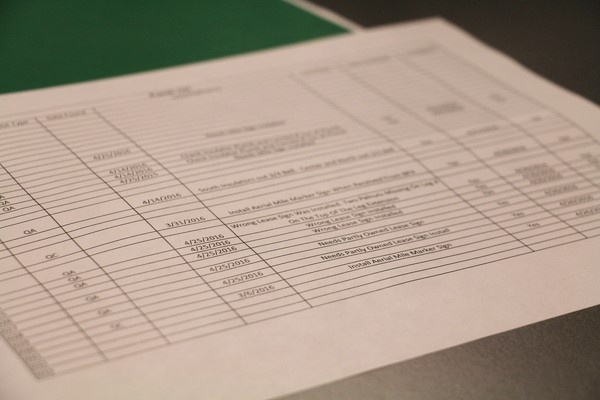
Final closeout is the last hurdle to jump in order to successfully complete a project. But before this milestone can be achieved, owners must ensure the contractor performs the tedious task of completing punch list items. The bad news is that this process can often drag out longer than one might expect. The good news is there are steps you can take to streamline the process.
It all starts with having a solid quality management inspector on your team, whether that person is an in-house employee or an outside consultant. With that inspector in place, the following tips will be a huge benefit to streamlining the punch list process.
Maintain an open issues log (OIL) throughout the project – Many OIL items will be addressed during construction, but there will be some minor issues that will still need to be addressed at the end of the project via the punch list. If you don’t keep track of these issues in a maintained log, it’s likely they will be forgotten or brushed off until the last moment.
Review your specifications – As you near the end of the project, go back through the specifications to ensure all requirements are being addressed. If any items were overlooked, add these to the punch list so they can be tracked to completion prior to demobilization from the project site.
Tie the punch list to final payment and/or release of retainage – In order to ensure punch list items are completed in a timely manner prior to demobilization, it is a good idea to require they be completed prior to final payment or releasing retainage money. This will encourage the contractor to complete punch list items along the way rather than deferring until the end of the job.
Go through the punch list prior to final walk-through – Request that the contractor review their punch list with your inspectors and address as many items as possible prior to performing the final walk through. This will encourage contractors to complete punch list work ahead of time and save the owner time when doing the final walk through. Chances are you will find a few minor issues to add to the punch list during the walk through, but any time saved is a huge benefit.
Use punch list items for lessons learned – If you are not doing lessons learned meetings at the conclusion of your project, you should be. A great way to identify lessons learned is through the punch list. Finalizing punch list items often takes much longer than we expect. By adding these issues to the lessons learned meeting, we can ensure they do not become issues the next time around. This tip is focused on the long-term and will benefit all your future projects.
Punch list completion can wear you down when all you want to do is get the project completed and closed out. By using these steps, you or your representative can streamline the punch list process, which is a great way to mark the end of a successful project.

